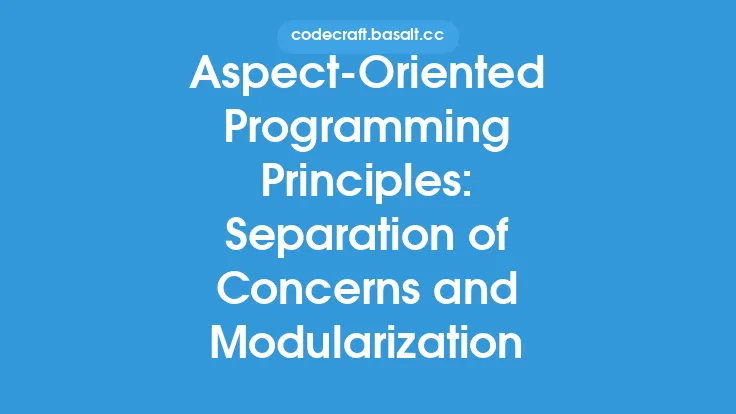Software development is a complex and multifaceted process that involves addressing various concerns, such as functionality, performance, security, and scalability. As systems grow in size and complexity, it becomes increasingly challenging to manage these concerns using traditional programming paradigms. This is where cross-cutting concerns come into play, which are aspects of a system that affect multiple components and cannot be encapsulated within a single module or object. In this article, we will delve into the world of cross-cutting concerns, exploring their nature, characteristics, and implications for software development.
Introduction to Cross-Cutting Concerns
Cross-cutting concerns are aspects of a system that span multiple components, modules, or layers, and cannot be confined to a single unit of code. They often involve non-functional requirements, such as logging, authentication, caching, and error handling, which are essential to the overall system but do not directly contribute to its core functionality. Cross-cutting concerns can be found in various domains, including security, performance, scalability, and usability. They can also be categorized into different types, such as technical concerns (e.g., logging, caching), business concerns (e.g., authentication, authorization), and quality concerns (e.g., performance, scalability).
Characteristics of Cross-Cutting Concerns
Cross-cutting concerns exhibit several characteristics that distinguish them from other aspects of software development. Firstly, they are pervasive, meaning they affect multiple components and modules throughout the system. Secondly, they are non-functional, meaning they do not directly contribute to the system's core functionality. Thirdly, they are often orthogonal, meaning they intersect with other concerns, such as functionality, performance, and security. Finally, they are typically scattered, meaning they are implemented in multiple locations throughout the codebase, making it challenging to maintain and evolve the system.
Implications of Cross-Cutting Concerns
The presence of cross-cutting concerns can have significant implications for software development. Firstly, they can lead to code tangling, where multiple concerns are intertwined, making it difficult to understand, maintain, and evolve the code. Secondly, they can result in code scattering, where the same concern is implemented in multiple locations, leading to redundancy, inconsistency, and increased maintenance costs. Thirdly, they can compromise the modularity and reusability of the system, making it challenging to add new features or modify existing ones. Finally, they can impact the overall quality of the system, including its performance, security, and scalability.
Addressing Cross-Cutting Concerns
To address cross-cutting concerns, developers can employ various techniques and strategies. One approach is to use aspect-oriented programming (AOP), which provides a modular and reusable way to implement cross-cutting concerns. AOP involves defining aspects, which are modules that encapsulate a specific concern, and weaving them into the main codebase using a process called aspect weaving. Another approach is to use design patterns, such as the decorator pattern or the proxy pattern, which can help to modularize and reuse cross-cutting concerns. Additionally, developers can use frameworks and libraries, such as logging frameworks or security frameworks, which provide pre-built implementations of common cross-cutting concerns.
Best Practices for Managing Cross-Cutting Concerns
To effectively manage cross-cutting concerns, developers should follow several best practices. Firstly, they should identify and document cross-cutting concerns early in the development process, using techniques such as concern analysis or feature modeling. Secondly, they should modularize cross-cutting concerns using techniques such as AOP or design patterns, to improve reusability and maintainability. Thirdly, they should use frameworks and libraries to implement common cross-cutting concerns, rather than reinventing the wheel. Finally, they should continuously monitor and refactor the codebase to ensure that cross-cutting concerns are properly modularized and maintained.
Conclusion
In conclusion, cross-cutting concerns are an essential aspect of software development, and their proper management is critical to ensuring the quality, maintainability, and scalability of complex systems. By understanding the nature and characteristics of cross-cutting concerns, developers can employ effective techniques and strategies to address them, such as AOP, design patterns, and frameworks. By following best practices for managing cross-cutting concerns, developers can improve the modularity, reusability, and maintainability of their codebase, and ultimately deliver high-quality software systems that meet the needs of their users.





